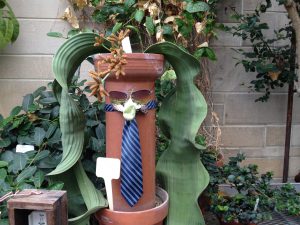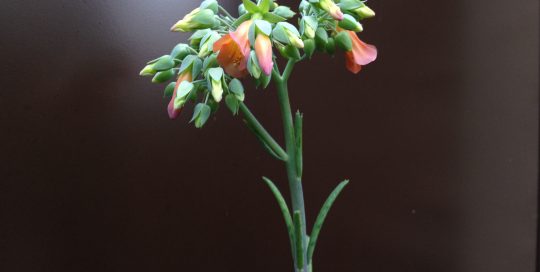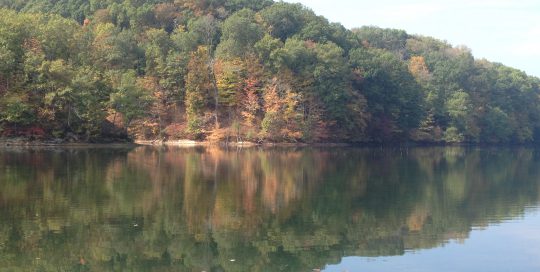Weirdest plant ever: Welwitschia mirabilis
Views: 14776

Even without the sunglasses and necktie (courtesy of the biologists at Indiana University’s Jordan Hall Greenhouse), this may be the weirdest plant I have ever seen. After doing a little research, I think it may be one of the weirdest plants on the planet. Welwitschia mirabilis, or Tree tumbo, have been around at least since the Jurassic period. They are the only plant in their scientific Family, which means they are truly one of a kind.
They are only found in Southern Africa in the fog belt of the Namib Desert. There, moisture is measured in millimeters, not inches, and some years there may be no rain at all. To survive, Welwitschia mirabilis developed long broad leaves to both absorb moisture from the fog and direct condensation drips to the root zone. They also grow a long taproot to seek out moisture in the sand. This is why they are often planted in chimney pots to accommodate the root (see picture).
Odd Physiognomy
Even though it looks more like a succulent, Welwitschia is considered a shrub or dwarf tree. The two leaves that emerge as a seedling are the only two leaves the plant will ever grow. This is a trait unique to Welwitschia. Wear and tear shred these two leaves over time. This can make it appear like the plant has more. However, the original two are the only leaves the plant will ever grow.
This is even more impressive when you learn that the average life span of Welwitschia mirabilis plants are four to fifteen hundred years. There are a few specimens estimated to be two thousand years old. So that means those plants have been growing the same two leaves for two thousand years! The tallest specimen on record is almost six feet tall. The widest is around 28 feet wide. It is worthwhile to do a google image search to see some pictures of this wild-looking plant in its natural habitat.
Where (not) to find them
It is not likely that you will find a Welwitschia mirabilis for sale at your local nursery, but I thought their story was too cool not to share. Think about it, millions of year ago these plants survived a killer asteroid, thousands of years ago they survived an ice age, and, despite living in one of the hottest and driest climates available, there are still thousands of them dotting the Namib Desert today, just drinking the fog and slowly growing two leaves. Mirabilis, which means “remarkable” in Latin, is truly an appropriate name.
Meet Abbi Hayes
Abbi's Recent Posts

Kalanchoe delagoensis: Mother of Millions







